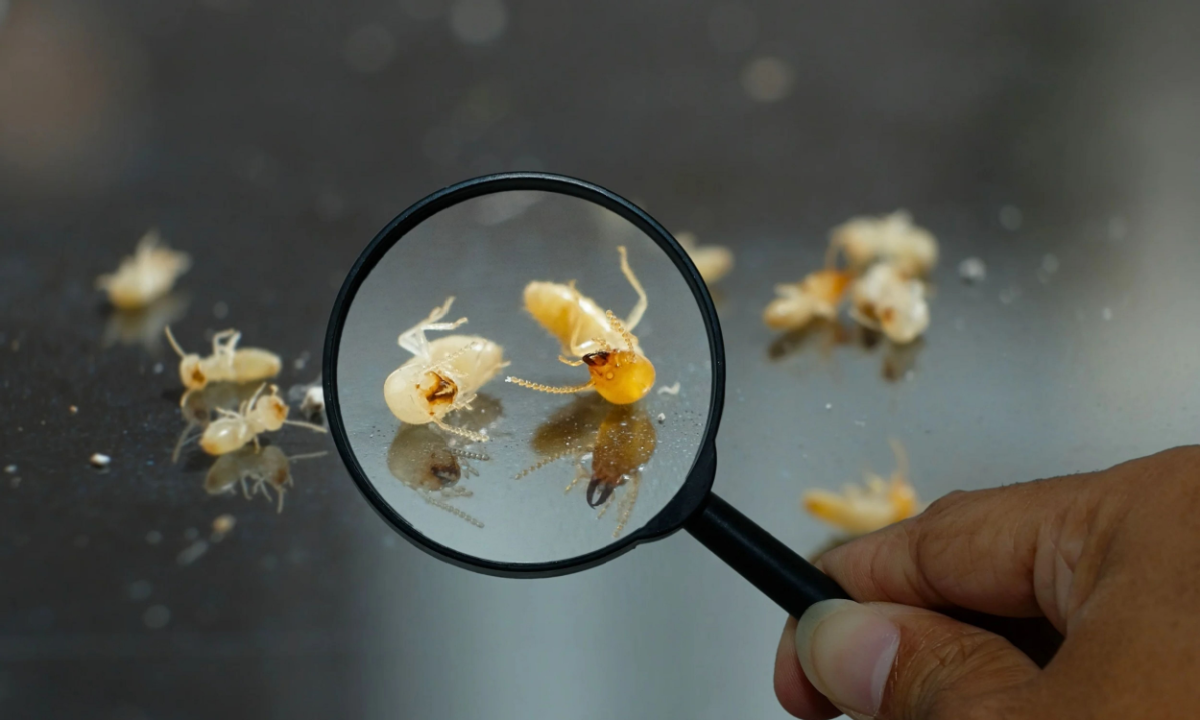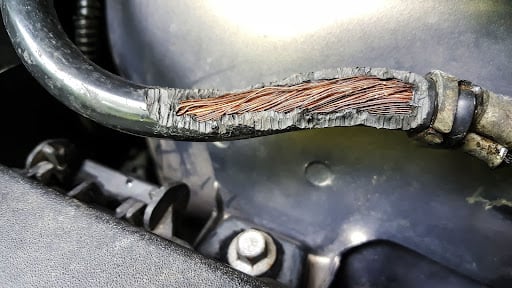Termites cause billions of dollars in property damage each year, making them some of the most disastrous and hard-to-eliminate pests. Worst of all, many can live undisturbed in your home for several years before being discovered.
Educating yourself about the telltale signs of termites will help you prevent home damage and act quickly to eliminate termites. Here are some important signs of a termite infestation, as well as the best ways to get rid of them for good using DIY or professional treatment methods.
Identifying Different Types of Termites
The two most common types of termites are subterranean and drywood. Subterranean termites live in large colonies underground, while drywood termites are found in wood above the ground.
Subterranean termites typically reside on the east coast and are smaller, with a darker head, than drywood termites.
Most termites are typically ¼ to 1.2 of an inch long, with straight antennae and ranging in color from white to dark brown. Kings and queens are on the larger side, and swarmers–termites who leave their colonies to find mates and form new colonies–are distinguished by their wings.
Signs of a Termite Infestation
Though both termites may act differently, you’ll be able to spot them through these telltale signs of a termite infestation.
Mud Tubes
Mud tubes are small, pencil-sized tunnels built by termites out of wood and dirt to connect colonies and shield themselves from predators. Seeing mud tubes around your home is often the first sign of a termite infestation for many people, and these tubes can be easily identified by conducting routine termite inspections. Look around basements on exterior walls for mud tubes that connect termites to their hiding spots.
Wood Damage
Wood damage to a home is another sign of a termite infestation, as these pests are known to chew through wood floors, framing, and porches. Unlike Carpenter Ants, termites actually burrow into wood and deliberately damage structures. Buckling wood, pinholes in drywall, and sunken areas on the floor are other common signs that termites are damaging your home’s framing.
Sticking Doors
Termites produce moisture when they feed, which can cause windows and doors to stick together. However, it is important to note that sticking windows and doors are not a definite sign of a termite presence, as the hot summer months can also cause this to happen. If you have noticed other signs of termite damage to your home, it may be worth looking into.
Frass
Frass, also known as termite droppings, can easily be mistaken for dirt or wood shavings. As termites make their way through wood or drywall, they will kick their droppings out of the holes they are creating, so if you notice piles of frass around your home, contact a pest control professional promptly.
Paint and Drywall Bubbling
Since termites produce moisture when they eat, they can cause paint and drywall to bubble. If you notice the paint in your home looking strange or warped, it may be time to reach out to a pest control company to confirm a termite infestation.
Discarded Wings
Once male termites find mates, they will break off their wings to communicate to other termites that they are taken. If you notice discarded insect wings around your home, it may be a sign that you are dealing with a termite infestation.
Live Termites
Spotting live termites in or around your home is an obvious sign of a termite infestation. Termites can be easily mistaken for flying ants or other insects, so it is important to know how to identify them in order to treat a potential problem (see above).
Top Termite Treatment Options
Once you know for certain that termites are in your home, it’s time to act fast. Termite treatment costs are usually more affordable than the cost of repairing a damaged home. Consider these treatment methods to get rid of termites for good.
Termiticides
Termiticides are chemicals that kill termites by baiting them and are known to be highly effective. Termiticides are some of the most commonly used treatments for termites and come in both liquid and foam forms that are not harmful to people or pets once dry.
Some of the most common termiticide brands are Spectracide, ORTHO, and BioAdvanced, as these are all products you could purchase in-store and apply yourself. However, it is important to note that termiticides are safest when applied by a professional, especially considering how difficult it can be to get rid of termites.
Termite Barriers
Termite barriers can be effective at treating a current termite infestation as well as preventing these pests from entering your home. There are two main types of termite barriers: chemical barriers and physical barriers. Chemical barriers involve using a liquid chemical beneath the ground to create a barrier around a home. Physical barriers are obstacles that physically prevent termites from entering your home, typically made of metal or mesh.
Termite Baits
Termite baits work by luring termites to consume the bait before traveling back to their colonies and killing the rest of the termites. Termite bait stations are typically hollow plastic tubes with holes on the sides that are placed in the ground to allow termites to enter them. The bait inside the bait stations is made out of small wood-like particles that attract termites and are known to be highly effective in eliminating these pests.
Boric Acid
Boric acid is a commonly used solution to get rid of termites. Boric acid can be applied by spraying it into the cracks and crevices of floors and walls in your home, and is thought of as a less harmful way to kill pests. Boric acid dehydrates termites, causing their nervous systems to shut down.
Neem Oil
Neem oil is another non-toxic solution to getting rid of termites, though it is important to note that this method is not as effective as the other methods mentioned in this list. Neem oil kills termites slowly by preventing their ability to shed their skin or lay eggs. However, in order for neem oil to kill termites, they need to come in contact with it first, which can be tricky.
Diatomaceous Earth
Diatomaceous earth is a powder-like substance that is safe for humans to ingest and can also kill many household pests, including termites. To use this method, simply sprinkle diatomaceous earth on areas where you suspect termites. When the termites walk on top of the powder, it will penetrate their exoskeleton and dehydrate them.
While these termite treatment methods can be effective, nothing beats the efficiency and certainty of hiring local termite control services. Anchor Pest Control can handle any termite infestation quickly and safely using integrated pest management tactics that are safe for you and your family. Call us today for a free quote if you live in the tri-state area.
FAQs
Why are termites difficult to get rid of?
Termites tend to swarm in large colonies and can regenerate even if a queen perishes. This means termites have to be eliminated entirely, requiring more extensive pest control methods.
What draws termites out?
If you’re looking to spot termites, look for wet areas of your home where water has pooled. This is where most termites will dwell as they scavenge your home for food.
What kills termites quickly?
Most termiticides are designed to kill termites quickly, but boric acid is another fast-acting and natural solution.




